This page contains affiliate links. We may earn money or products from the companies mentioned in this post through our independently chosen links, which earn us a commission. Learn More
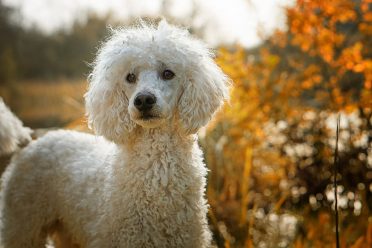 The Poodle is a dog breed that can come in three types, the Standard Poodle, the Miniature Poodle, and the Toy Poodle. This Dog breed’s origin is still in discussion, whether it originated from Germany or France. The lifespan of a Poodle can be anywhere between 12 to 15 years.
The Poodle is a dog breed that can come in three types, the Standard Poodle, the Miniature Poodle, and the Toy Poodle. This Dog breed’s origin is still in discussion, whether it originated from Germany or France. The lifespan of a Poodle can be anywhere between 12 to 15 years.
Poodles get a reputation for being spoiled snobs because of their flamboyant appearance, but nothing could be further from the truth. With their quick sense of humor and playful nature, Poodles are some of the friendliest dogs you’ll meet.
In this article, I’ll tell you everything you need to know about the versatile Poodle and dispel some myths about the breed. Plus, we’ll find out why it’s a good choice for a family pet.
Contents & Quick Navigation
The noble history of Poodles
Altogether, the three Poodle sizes – Standard, Miniature, and Toy – make one of the most popular dog breeds today. However, their exact ancestry remains a mystery.
Some say that the Poodle is a cross of several European water dogs, including Portuguese, French, German, Spanish, and Hungarian varieties. According to other historians, the breed descends from North African canines that found their way to Gaul after being imported to the Iberian Peninsula.
Another theory states that Poodles’ ancestors were Asian herding dogs that traveled with Germanic Goth and Ostrogoth tribes, eventually becoming a German water dog. The Fédération Cynologique Internationale (FCI) claims that the breed descends from the Barbet, an ancient water dog from France.
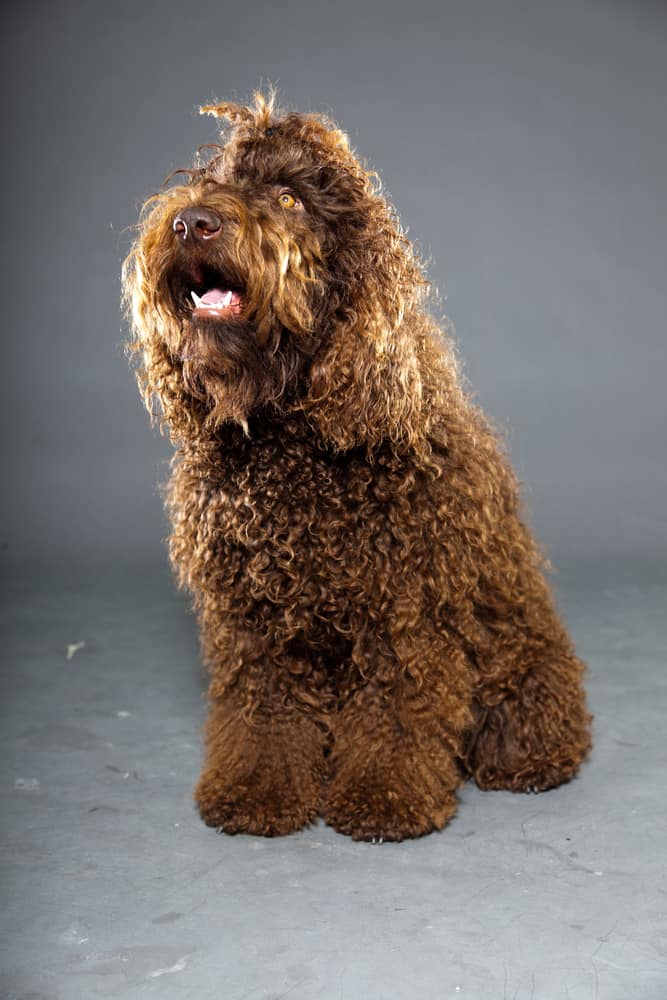
Barbet
Whatever the Poodle’s origin is, these pooches have always been known for their hunting abilities. The Standard Poodle first served as a retrieving water dog 400 years ago. The breed was built for water retrieval: its dense, curly coat protected it against the elements, its webbed feet made it a superior swimmer, and its intelligence made the dog easy to train.
(To this day, the Standard Poodle is the only non-sporting dog that’s eligible for the American Kennel Club’s retriever hunting tests.)
The French call the Poodle caniche, which comes from the female form of ‘duck,’ denoting the breed’s superior duck-hunting and swimming abilities. The breed’s water-retrieving prowess was also well-known in Germany, where the word pudelin means ‘to splash in water’.
From duck-hunters to lapdogs
Over the years, the Poodle’s popularity extended beyond its duck-hunting capabilities. The breed became a favorite pet for the upper class, with fanciers breeding the Standard down to smaller sizes to serve as companion dogs.
Pampered Poodles of all sizes enjoyed living in the lap of luxury with the nobility of France. Toy Poodles were reportedly favorites during the reign of Louis XVI, the last French king. At the time, the little dogs were given intricate haircuts and carried like trophies.
The love for these fluffy canines has been well-documented in various illustrations dating back to at least the first century BC. Egyptian and Roman artifacts and tombs from the period show Poodle-like dogs herding animals, retrieving small game, and bringing in game nets.
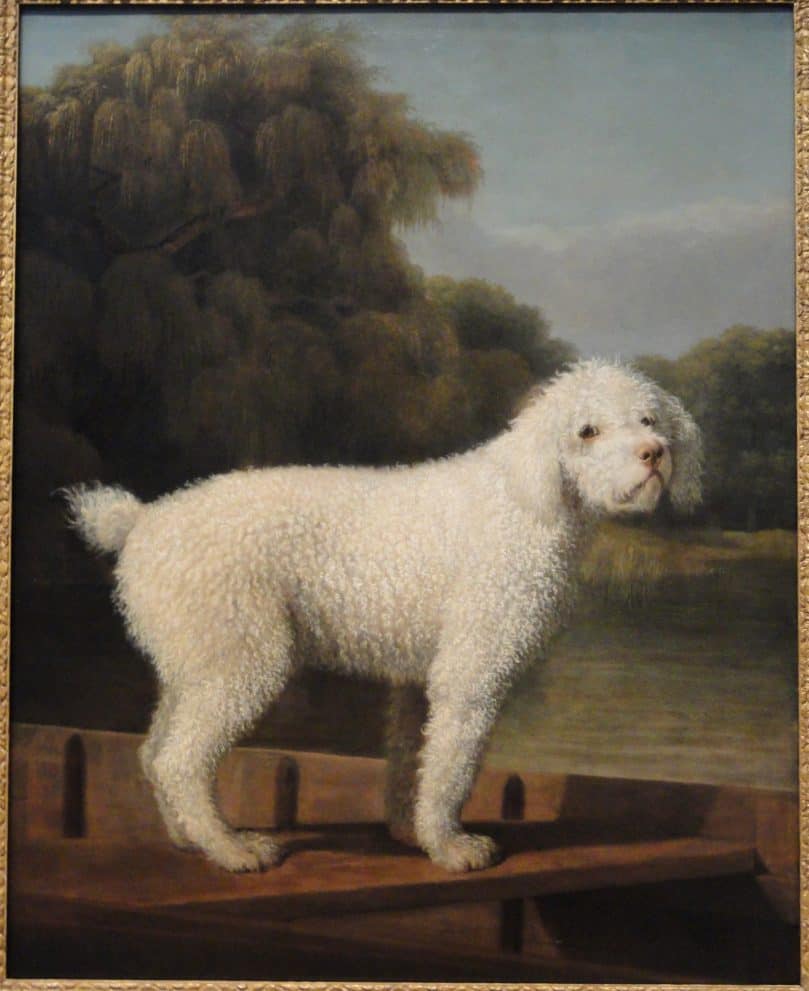
White Poodle in a Punt by George Stubbs, c. 1780, oil on canvas (source)
Drawings by German Renaissance painter Albrecht Dürer in the 15th and 16th centuries helped establish the image of Poodles today. Spanish artist Francisco Goya often included the dogs in his paintings, indicating the dog’s popularity as a pet in 18th century Spain.
With their impressive bouffant-style coats, these canines became fashionable in France, where they eventually became the national dog. By the late 19th century, they gained a reputation as show dogs, with some early show Poodles sporting corded coats.
The caniche continues to enjoy celebrity status even today. The AKC collectively ranked the three Poodle sizes as the 7th most popular dog out of 190 breeds in 2017.
The Poodle’s unmistakable appearance
Aside from their size (more on that later), most Poodles look the same, with oblong-shaped faces and tall necks. The Poodle’s eyes should be oval in shape and dark in color, having an alert expression, while Poodle ears are typically folded close the head.
A squarely built dog, the Poodle has well-proportioned muscles and a strong chest. As we said before, these canines are built for swimming. Along with webbed feet, their slender legs easily propel them through the water. A Poodle may have a docked tail; tail docking is traditionally done for cosmetic reasons.

Unlike many water dogs that have double coats, all three Poodle sizes have a dense, single-layer coat of curly hair. This coat is adapted to exposure to water and can be left to grow naturally into cords.
Called the Continental Clip, the commonly seen style of the Poodle’s coat (fur on the chest, hips, and leg joints but shaved legs, neck, and tail) is more than just for show. The cut protected the dog’s vital organs from the cold without restricting its movement in the water. Those rounded tufts of hair on the legs, hips, and the tip of the tail are called pompons.
Poodles’ coats and coloring
Poodles come in all colors, with the most common being apricot, black, blue, brown, cream, gray, red, silver, silver beige, and white, though not all of them have solid-colored coats. Parti-colored varieties, recognized as the original coloring for these pooches, have white fur with dark patches on their backs.
Phantom Poodles, on the other hand, have dark-colored coats with lighter tan or apricot fur above their eyes, on the muzzle and throat, on their legs and feet, and below their tails. Their dark-and-light coloring makes them similar in appearance to the Doberman Pinscher.
In most of these dogs, the coat affects the coloring of other body parts. For instance, most brown and apricot Poodles have liver-colored noses, eye rims, and lips, amber eyes, and dark nails.
Will an apricot Poodle fade in color?
The light reddish apricot shade looks gorgeous on any Poodle, but there’s no guarantee that the dog’s coat will remain in one color for its entire life. The breed’s fur tends to fade or lighten through time, and the fading is said to be more prevalent in red-colored coats.
Depending on your dog’s genes, its apricot coat may eventually fade into a white or cream hue.
The three types of Poodles
Thanks to breeding practices in medieval Europe, there are three Poodle sizes you can choose from today: Standard, Miniature, and Toy. Size is often the only distinguishing factor with these Poodle variations.
Standard Poodles are the biggest of the breed and also the first size to be developed. Also called a Large Poodle or a Giant Poodle, this dog is more than 15 inches (38 cm) tall at the shoulder, with males weighing up to 70 pounds (31 kg).

Standard Poodle
At its average size, the Standard Poodle is roughly the same height as a Golden Retriever. These ‘giants’ are about twice the size of the Miniature variety.
Miniature Poodles, also called Mini Poodles and Medium Poodles, were developed from the bigger Standards. These medium-sized dogs are 10 to 15 inches (25 to 38 cm) in height, and a Miniature Poodle has an average weight of 10 to 15 pounds (4 to 6 kg).

Miniature Poodle
The Medium Poodle, along with tiny Toy Poodles, was historically used as a truffle hunter, as the dog’s smaller feet ensured that the delicate fungi weren’t crushed under its feet.
Toy Poodles (AKA Teacup Poodles, Teddy Bear Poodles, and Micro Poodles) are the smallest of the bunch. These pint-sized pooches grow no bigger than 10 inches (25.4 cm) tall at the shoulder and weigh between 6 to 9 pounds (2.72 to 4 kg).
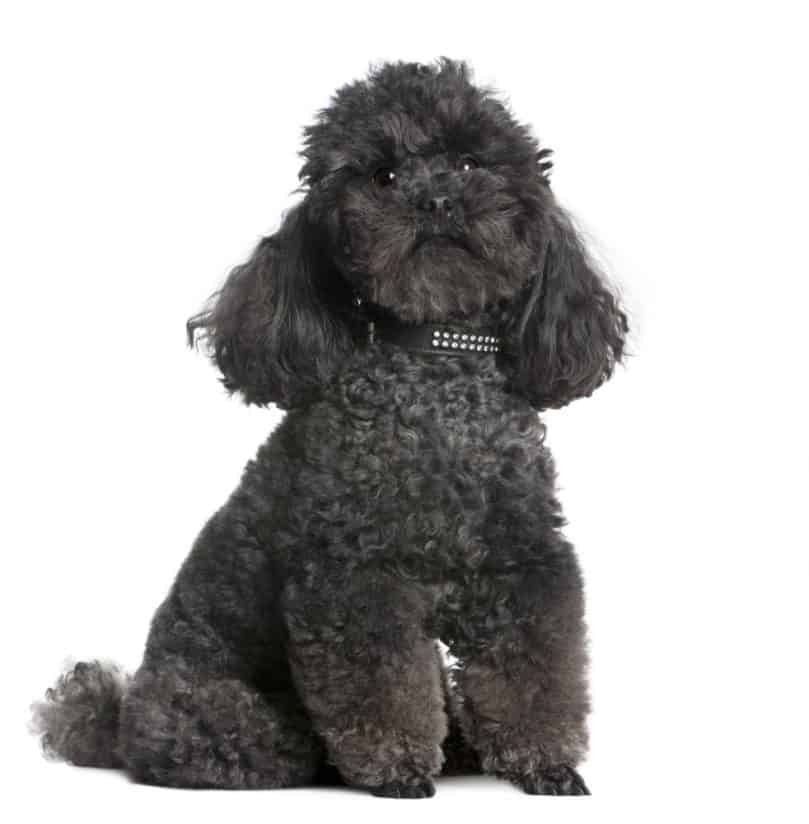
Toy Poodle
Teacup Poodles were developed as companions to the nobility and merchant class of 18th century England. Owners of these dogs often carried them in their shirtsleeves, earning Toy Poodles the nickname ‘sleeve dogs’.
Breeders sometimes advertise a fourth size of Poodle called the Klein Poodle or the Moyen Poodle (klein means small or mini in German, while moyen means medium in French). These Poodles are halfway between Standards and Miniatures in size.
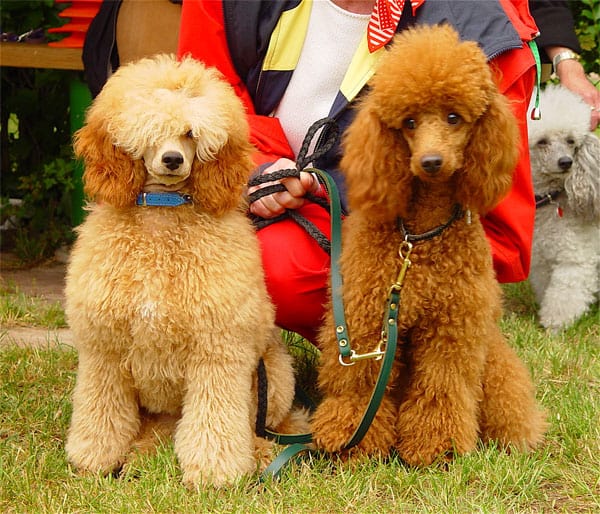
Klein Poodles
The FCI standard for Poodles includes this moyen size and indicates that these dogs should be between 14 to 18 inches (35 to 45 cm) in height.
Which size Poodle is right for me?
The right type of Poodle for you or your family largely depends on what you’re looking for in a dog. If you’re looking for an athletic pet that can keep up with your family’s active lifestyle, the Standard Poodle is the best match for you.
If you want a Poodle that more comfortably fits in your lap and has moderate energy levels, go for a Miniature Poodle. Live in an apartment with no unruly kids? The pocket-sized, delicate Toy Poodle will be your ideal companion.
The playful personality of the Poodle
The Poodle may appear haughty because of its pristine, well-maintained coat, but this is one case where appearances are deceiving.
These dogs have a sharp sense of humor, which, coupled with their intelligence, makes them natural-born clowns. Poodles love to keep their owners entertained with their antics. Don’t be surprised to find yourself outwitted by this clever, good-natured canine.
Watch this cute Poodle puppy performing tricks for its owner:
Poodles of all sizes are friendly and sociable, though they tend to be reserved with strangers upon first introduction. Once they become familiar with guests in your home, though, these pooches will quickly revert to their charming selves.
These dogs dislike being left out of family activities, but, in general, they’re not particularly clingy. Separation anxiety is considered atypical in Poodles.
That said, they still prefer to live indoors with their family. A Poodle will be happy whether you live in an apartment or a mansion, as long as it gets sufficient exercise and companionship.
The three different types of Poodle have similar temperaments. Known for their obedience, Standards have an adventurous, enthusiastic attitude that makes it a good family dog. They love playing games – whether hide and seek, fetch, or water games – with children and teens who can keep up with their high energy levels.
Standard Poodles usually get along well with babies and toddlers, as long as they’re supervised. These dogs will also thrive in a home with many kids, as long as they can retire to a quiet place if needed.
The ultimate companion dogs, Miniature Poodles and Toy Poodles tend to be more affectionate and also more mischievous. They bond quickly with one person and will follow you around at home. These dogs love to be the center of attention and are perfectly content to stay in your lap all day.
With all these positive qualities, Poodles are good pets for a wide variety of homes and families.
Are Poodles aggressive?
Poodles are not a particularly aggressive breed. Most Standards will display mild protective instincts, but they’re naturally friendly towards kids and other animals.

Because of their size, smaller Poodles tend to be less patient with younger kids. The Toy Poodle, in particular, may be fearful of children who may be much larger than the dog. This snappishness is why most Miniature and Toy Poodles are better suited for homes with older kids or teens.
Poodles and barking
No matter its size, the Poodle has a loud bark that it won’t hesitate to use if it perceives a threat to your family. Excessive barking can be trained out of your dog if your Poodle tends to be overexcited.
Wondering why your Poodle keeps barking? Here are some common reasons:
- Being left home alone – Some Poodles will experience some anxiety if it’s the first time you’re leaving them at home. Like we said before, separation anxiety is not common in Poodles, but smaller Poodles may be more prone to this.
- Bad weather – Most dogs have a heightened sense of awareness during bad weather, especially storms. The flash of lightning and the sound of thunder may be overwhelming for your Poodle. High-pitched sounds caused by strong winds and changes in air pressure will make your dog feel uneasy. Socialization with noise and flashing lights can help with these problems.
- Boredom – Poodles sometimes bark because they’re bored, lacking the physical and mental stimulation they need. Aside from spending plenty of time playing with your dog, make sure it has a variety of dog toys to occupy its time. Interactive toys work best at preventing your Poodle from getting bored.
Poodle training: what you need to know
If there’s another thing the three Poodle sizes are known for aside from their looks, it’s their intelligence. These pooches hold the position of second smartest dog breed, ranking just behind Border Collies.
Poodle puppies are easy to train, especially with the right techniques. Smart and eager to please, these pups need obedience training from a young age to keep their brilliant minds active.
Make sure to keep training sessions fun and short, as Poodles tend to quickly tire of repetitive commands. Keeping your dog occupied ensures that it doesn’t become destructive out of boredom.
They’re sensitive to your tone of voice, so be firm without being harsh. A calm and confident manner, along with positive reinforcement, go a long way in teaching Poodles good behavior. You can even teach your Poodle tricks in addition to traditional commands.
Trained properly, Poodles are incredibly obedient dogs. They excel in a variety of canine sports, including agility, tracking, dock-diving, and retriever hunting tests. Poodles have been awarded ‘Best in Show’ multiple times at the Westminster Kennel Club Dog Show, the World Dog Show, and Crufts dog shows.
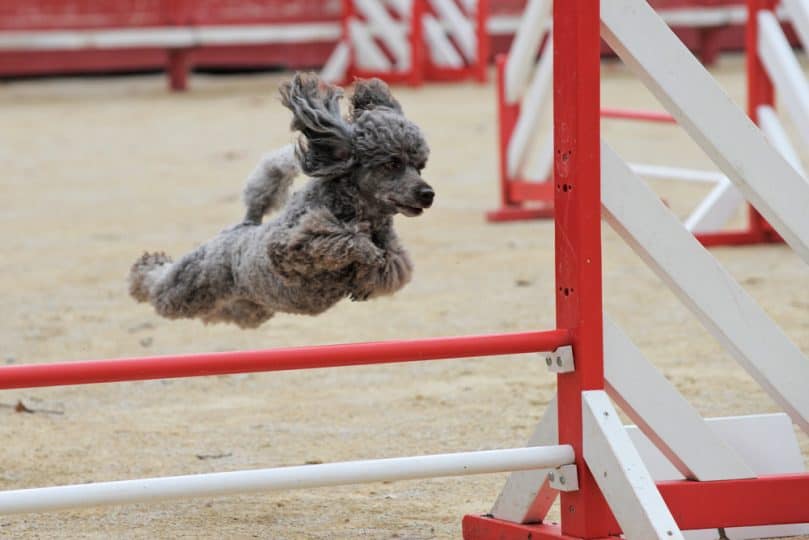
Poodle participating in agility
The sociable, empathetic nature of the Poodle also makes it a great therapy dog or assistance dog. Standard Poodles are particularly suited to this role because it satisfies their need to work.
The versatile Poodle as a working dog
Poodles have always been working dogs. Before they became show dogs and companions to the wealthy, Poodles’ original purpose was to hunt ducks and retrieve small game from the water.
Because of their athleticism and obedience, Standard Poodles are considered to be some of the best working dogs today. As of 2017, many Poodles have made their way back to the hunting grounds.
Hunters prize these dogs not only because they’re intelligent and focused on the job, but also because they’re fast. The Standard Poodle’s top speed clocks in at 32 kph, faster than the Labrador Retriever and just behind the Whippet. Poodles are much faster than most British and North American Retrievers and Spaniels because they have longer legs.
Unlike other hunting dogs, Poodles love a challenge and will attempt to solve problems on their own. This willfulness is why they need specific instructions on how to carry out tasks, with corrections that are timely and precise.
Originally used for locating truffles, Miniature Poodles have also begun to be used for hunting. Many hunters prefer these smaller dogs for catching game because they can get into corners and through brush that bigger Retrievers and Spaniels can’t reach.
The AKC opened its Hunt Test Program to Mini Poodles in 2014, and, in 2017, Standard and Miniature Poodles became eligible to participate in AKC’s Spaniel Tests, which are specifically for dogs with flushing capabilities.
More than just a hunting dog
Poodles are much more than just duck hunters and pampered pooches. The Iditarod probably conjures images of teams of Huskies and Malamutes, but did you know that Poodles once participated in the ‘Last Great Race on Earth’, too? Led by John Suter in 1989, Standard Poodles joined the Iditarod and they successfully crossed the finish line, too.
The Poodles’ coats – which were said to be so thick the dogs looked like sheep – were perfectly suited to subzero race conditions. The dogs ran and finished the race in 1990 and 1991 as well.
Their hardworking nature doesn’t mean Poodles are all work and no play, though. These pups also have a long history of involvement with the European circus. The dogs’ eye-catching appearance, along with their obedience and intelligence, made them natural performers and drew in adoring crowds.

Trained Poodles performing at the circus
Writings from the 1800s talk of showmen who performed with troupes of Poodles, dancing along to music and wearing costumes. In 18th century London, a Standard Poodle named Munito was even capable of solving simple mathematical problems, identifying colors, and playing dominoes.
How to take care of a Poodle
Aside from the maintenance needs of their coats, Poodles are relatively easy to care for. Here’s what you need to know about their diet and exercise needs and the health issues that commonly affect this breed.
The proper diet for Poodles
A Poodle’s size determines the amount of food it needs daily. Standard Poodles can be fed 1.5 to 3 cups of dog food daily, while the Miniature Poodle will be fine with ¾ to 1 cup of high-quality kibble throughout a day. Tiny Toy Poodles need only ¼ to ½ cup of dry dog food daily.
Make sure to divide your Poodle’s food into at least two meals throughout the day to keep your dog at a healthy weight. Portioning food into small meals will also reduce the risk of bloat, which is common in Standard Poodles.
Miniature Poodles and Toy Poodles have a habit of begging at the table, but resist the urge to give into those pleading eyes. Feeding your dog table scraps can make him a finicky eater, which will only cause more problems for his digestive system.
Which food can Poodles eat?
The three types of Poodles can eat food that most dogs can. According to the AKC’s list of foods that dogs can and can’t eat, Poodles can safely eat apples, carrots, mango, and pears. Bananas, papaya, and corn should be fed to your Poodle in moderation. Your Poodle can eat cheese, but the food should be used as a treat.
Poodles can eat eggs and cooked meats and seafood, as well. Cooked rice is likewise safe for Poodles; a bit of rice can be helpful for pups experiencing digestive problems.
Grapes and raw meat are not recommended for your dog’s consumption.
The athletic Poodle’s exercise needs
These dogs are agile and active, so they require regular exercise that will help them burn through their high energy levels. Prepare yourself for Poodle zoomies if your dog’s energy stores are not used up.
 Again, a Poodle’s size will tell you how much exercise it requires. The Standard variety needs the most exercise: at least 45 minutes per day. The Miniature and Toy sizes require less physical activity. With their lower energy levels, these Poodles make good buddies for couch potatoes.
Again, a Poodle’s size will tell you how much exercise it requires. The Standard variety needs the most exercise: at least 45 minutes per day. The Miniature and Toy sizes require less physical activity. With their lower energy levels, these Poodles make good buddies for couch potatoes.
Running, jumping, walking – your Poodle will enjoy any activity that gets it moving. Poodles like water, so they’ll love going for a dip in the pool. Of course, these pups are always up for a game of fetch. Retrieving provides the physical and mental stimulation these dogs need.
Like we said before, these dogs are well-suited to canine sports. However, they’re also perfectly happy with simple tasks that keep their mind busy. Chores like bringing in the newspaper, fetching your slippers, and carrying garbage to the recycle bin help keep hyperactive Poodle puppies under control.
Problem-solving games and toys will also keep your Poodle’s mind occupied, so your pet is less likely to get into trouble.
A guide on Poodle grooming
It takes some effort to keep a Poodle looking good. Brush your dog’s coat daily to keep the fur from matting or tangling. Most Poodle puppies are born with curly hair, so you’ll want to get your little canine buddy used to the process of grooming at a young age.
Did you know that Poodle fur can be formed into rope-like cords if left to grow naturally? While this can be an attractive look for your dog, keep in mind that corded coats are notoriously difficult to dry after washing.
You may find that a Poodle’s unclipped coat will be difficult to manage, so trimming the hair every four to six weeks is the best option. You can do the trims yourself or take your Poodle to a professional groomer.
Many Poodle owners prefer to keep their dogs in a simple Sporting Clip, where the coat is short and closely follows the outline of the body.

Poodle in a Sporting Clip (source)
Popular Poodle grooming styles
You have plenty of Poodle haircuts to choose from, especially if your Poodle has long hair. These are some common clips that professional groomers can do for your dog.
- Kennel Clip – Poodles in a Kennel Clip look similar to ones with a Sporting Clip. In the Kennel Clip, the groomer shaves the hair on the face, feet, and tail and keeps the body hair short, with the length depending on the owner’s preference. The hair on the dog’s topknot and tail are longer than the body hair.
- Lamb Clip – The Lamb Clip for the Poodle is simple, as well. The face, tail, and feet are all shaved, but the topknot and the tail are more or less the same length as the hair on the rest of the body.
- Puppy Cut – Young Poodles can often be seen in this coat style, where the face, throat, paws, and the base of the tail are neatly shaved. The hair on the Poodle’s body is trimmed to the owner’s desired length.
Are Poodles hypoallergenic?
Poodles are often considered hypoallergenic because their tightly curled coat traps falling hair. As a result, these dogs shed dander at a slower rate. With its low-shedding coat, the Poodle is less likely to trigger your allergies and make you sneeze. You’ll spend less time going over your clothes and furniture with a lint roller, too.
How often should I bathe my Poodle?
No matter what type of Poodle you have, you don’t want to bathe your dog too often. Frequent baths will strip your pet’s skin of oils that help keep its coat healthy and shiny. A bath every 3 to 4 weeks should be enough to keep your Poodle sufficiently clean while preserving its skin’s natural oils.
Make sure to thoroughly dry your Poodle after its bath to prevent skin infections and any undesirable smells from developing.
Important grooming tips for Poodles
Proper dental hygiene is important for all three Poodle sizes, but more so for Miniature and Toy varieties, which have smaller jaws. Brush your Poodle’s teeth at least once a week with vet-approved toothpaste to keep them healthy.

Many Poodles have weepy eyes that could stain the hair on their face. Use an alcohol-free pet wipe or a washcloth and warm water to wipe away your Poodle’s eye discharge before it can set into the facial fur.
Ear infections also commonly affect Poodles because hair often grows into their ear canal. Check your dog’s ears at least once a week and remove wax and dirt buildup. You can also pluck hair from your Poodle’s ears to encourage airflow and prevent infections caused by trapped moisture.
Common health issues in Poodles
As mentioned above the average Poodle lifespan is 12 to 15 years, but various health problems can affect this life expectancy. All three Poodle sizes can be affected by hip dysplasia, various eye infections, epilepsy, and immune-mediated disorders.
Toy and Miniature Poodles are more prone to orthopedic problems like luxating patellas and Legg-Calve-Perthes disease, which results in the spontaneous degeneration of the femoral bone.
Addison’s Disease affects Standard Poodles more often and can cause fatal chemical imbalances in the dogs. Symptoms for this condition include sudden lethargy, frequent gastric problems, or an unusually low tolerance for stress. Early detection of this condition and lifelong medication give affected Poodles the best chance at a normal life.
As we said before, the Standard Poodle is also more vulnerable to bloat or gastric dilatation with volvulus. You can prevent this fatal condition by feeding your dog smaller meals and restricting exercise right after eating. If your Poodle is vomiting or has an upset stomach, consult your vet as soon as possible.
Skin conditions like sebaceous adenitis can be a problem for your Poodle. Symptoms for this disease include dandruff that sticks to the coat, dull and brittle hair, and skin lesions on the back and ears. Poodles with this condition also give off a musty or rancid smell.
Like with many dogs, cancer can affect Poodles as well. Older Standard Poodles are more prone to squamous cell carcinoma, which are skin tumors that can develop on the head, abdomen, rear, or lower legs.
How much does a Poodle cost?
The price of a Poodle changes according to its size and pedigree. Poodle breeders may have Standard Poodle puppies for sale at around $1000 each, while the price on Miniature Poodle pups may be anywhere from $700 to $6000. Toy Poodles may cost $1200 to $2000 each.
Whatever type of Poodle you’re looking for, you want to support Poodle breeders or kennels who are in good standing with the Poodle Club of America and follow the club’s ethical guidelines.
You can get in touch with the following breeders if you’re looking for Poodle pups for sale:
- Family Affair Standard Poodles (North Carolina)
- Ash’s Mystical Poodles (Nevada)
- Forever Poodles (Florida)
Poodle adoption is also an option if you’d rather bring home an adult dog. The good news is that there are plenty of Poodle rescue organizations for you to choose from:
How many Poodle mixes are there?
Throughout history, Poodles have been mixed with other dog breeds, whether to save these breeds from extinction, reduce their size, or simply improve their appearance. Both the Miniature and Standard Schnauzer and several dogs of the Bichon type have Poodle blood in them.
This trend of cross-breeding Poodles continues today, with the widespread popularity of designer dogs. Starting with the Labradoodle in the late 80s, Poodle mixes now number more than 50. From big, strong Boxers to tiny Chihuahuas, a wide variety of dogs have been crossed with Poodles.
Most popular Poodle mixes
- Schnoodle: Poodle and Schnauzer mix
- Labradoodle: Poodle and Labrador Retriever mix
- Yorkipoo: Poodle and Yorkie mix
- Mini Goldendoodle: Miniature Poodle and Golden Retriever mix
- Doxiepoo: Poodle and Dachshund mix
- Cavapoo: Poodle and Cavalier King Charles Spaniel mix
- Chipoo: Poodle and Chihuahua mix
- Peekapoo: Poodle and Pekingese mix
- Lhasa Poo: Poodle and Lhasa Apso mix
- Corgipoo: Poodle and Corgi mix
- Havapoo: Poodle and Havanese mix
- Bernedoodle: Poodle and Bernese Mountain Dog mix
- Shih Poo: Poodle and Shih Tzu mix
- Boxerdoodle: Poodle and Boxer mix
- Cockapoo: Poodle and Cocker Spaniel mix
- Pomapoo: Poodle and Pomeranian mix
- Maltipoo: Poodle and Maltese mix
- Poochon: Poodle and Bichon Frise mix
- Aussiedoodle: Poodle and Australian Shepherd mix
- Sheepadoodle: Poodle and Old English Sheepdog mix
Why are Poodle mixes so popular?
Poodle mixes are so well-loved because of the many positive qualities they inherit from the Poodle. These crossbreeds are often intelligent and highly trainable, and many of them have a low-shedding coat.
The three different Poodle sizes also help in creating hybrids that have the right features for a wide variety of needs.
What Poodle mix is best?
The best Poodle cross for your family depends on your specific needs and lifestyle. For instance, Aussiedoodles, Schnoodles, and Labradoodles are high-energy Poodle hybrids that can keep up with an active family or with owners that are looking for canine workout buddies.
If you’re looking for a kid-friendly Poodle mix, you won’t go wrong with Boxerdoodles, Bernedoodles, and Goldendoodles, all of which have low aggressive tendencies and a higher tolerance for children.
Want a cuddly little companion dog? You can go for Maltipoos, Poochons, Pomapoos, and Peekapoos. These Poodle crossbreeds will fit just right in your lap.
Poodles vs other breeds
Poodle vs Maltese
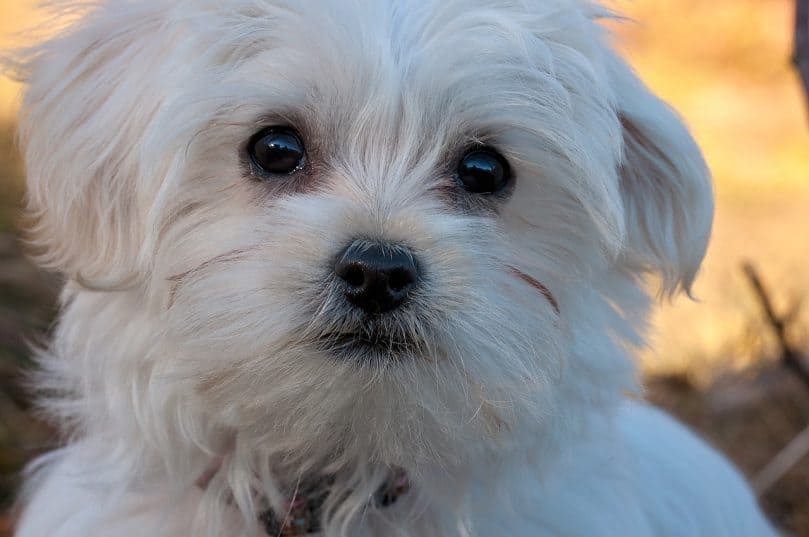
Maltese
Poodles and Maltese dogs are similar in appearance and temperament. Both are family-friendly dogs, but the Maltese suffers from separation anxiety more often.
Poodle vs Shih Tzu
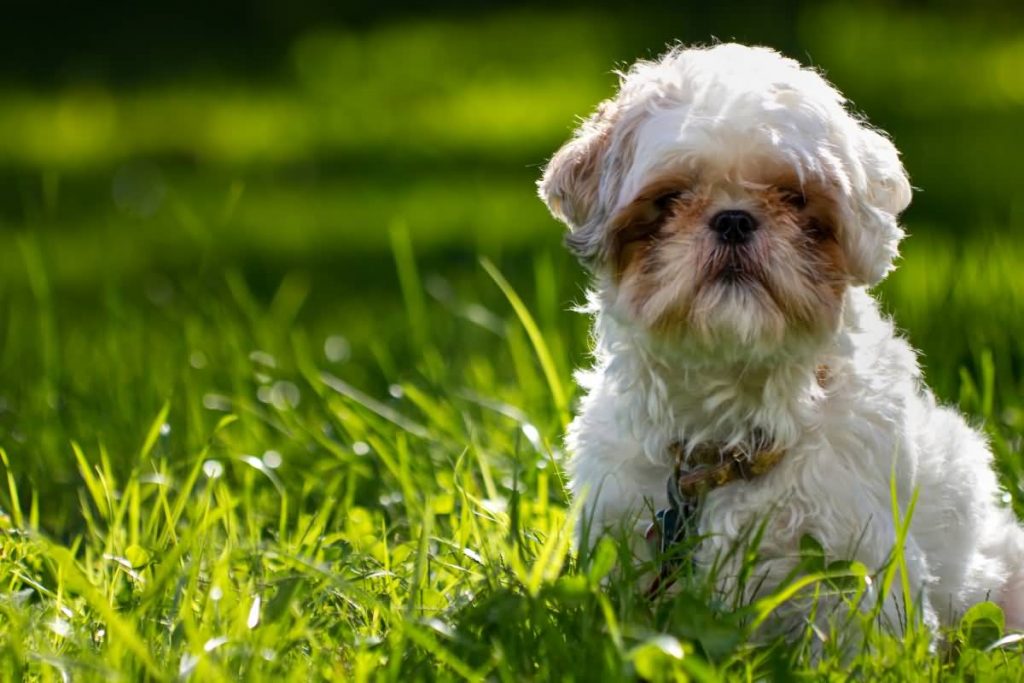
Shih Tzu
Poodles and Shih Tzus are breeds that have been around since ancient times. With its lower energy levels, the Shih Tzu tends to be more laid-back.
Poodle vs Yorkie

Yorkshire Terrier
One thing that Poodles and Yorkshire Terriers have in common is their high-maintenance coat. Of the two breeds, though, the Poodle tends to be more patient with kids.
Poodle vs Beagle
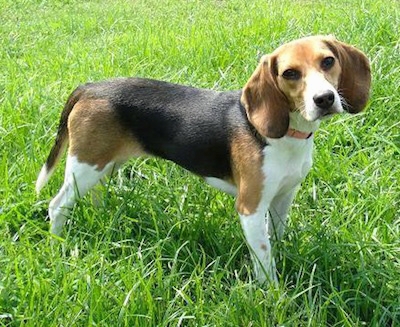
Beagle
Poodles and Beagles are both excellent family dogs, but Beagles may not be ideal for dog owners with allergies because of their short yet medium-shedding coat.
Poodle vs Chihuahua
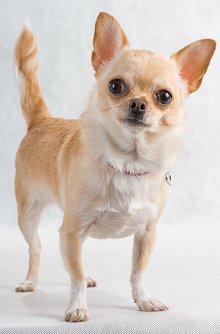
Chihuahua
Both breeds do well in a wide variety of living situations, including apartments. Unlike Poodles, though, Chihuahuas typically don’t have the patience for grabby little hands.
Poodle vs Doberman Pinscher
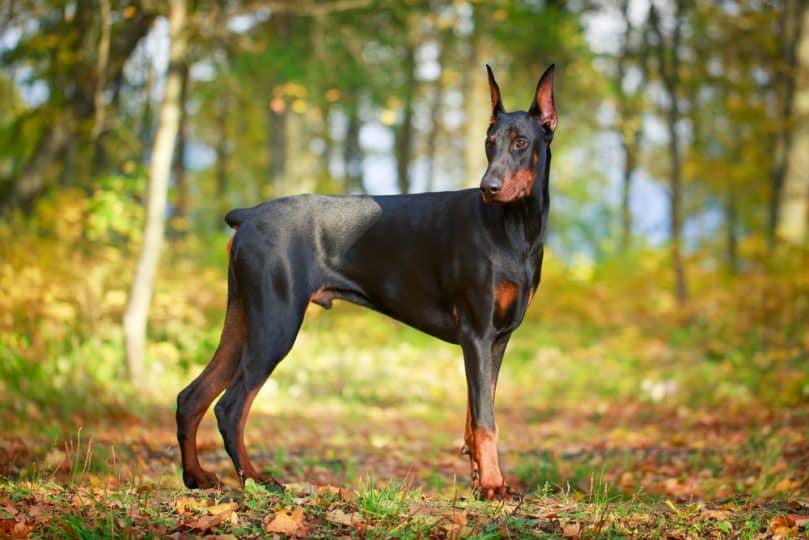
Doberman Pinscher
Poodles and Doberman Pinschers are both good dogs for first-time owners, but, with their short, smooth coats, Dobermans have fewer grooming needs than Poodles.
Poodle vs Golden Retriever
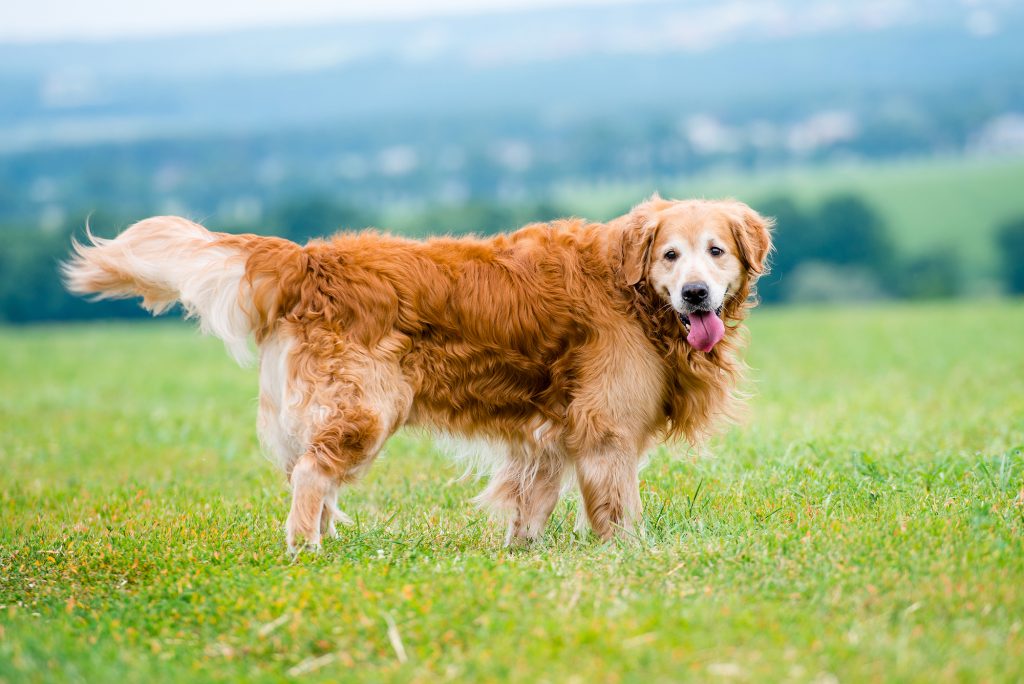
Golden Retriever
Poodles and Golden Retrievers are smart dogs that are eager to please. Golden Retrievers, however, have a much higher prey drive and are more likely to chase smaller animals.
Poodle vs Havanese
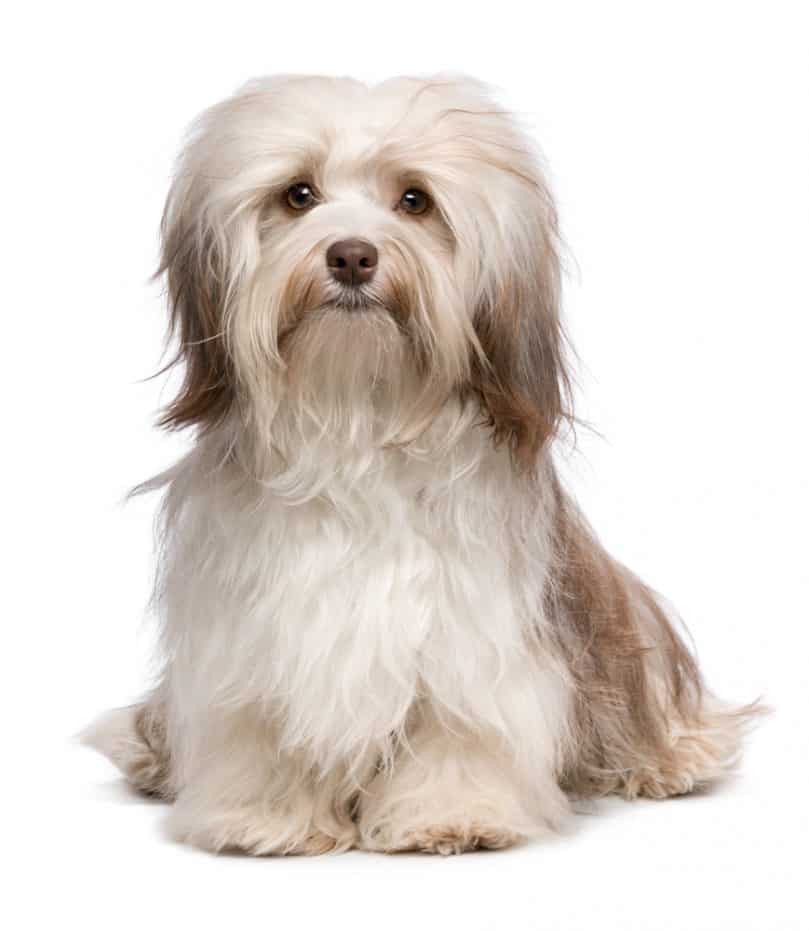
Havanese
The Poodle and the Havanese are both great with kids and can fit well into most families. One difference between these breeds is that the Havanese tends to bark more often.
Poodle vs Pomeranian
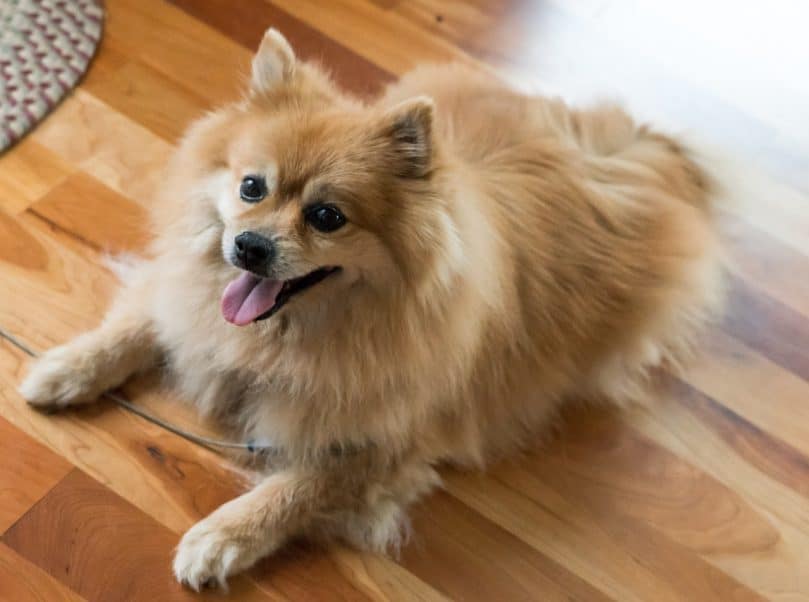
Pomeranian
The Poodle and the Pomeranian are high-energy dogs that need plenty of exercise. The Pomeranian, however, has a more independent nature.
Poodle vs Pug

Pug
Poodles and Pugs are both affectionate breeds, but a Pug may be a better dog if you want to cuddle all day. Pugs need much less exercise compared to Poodles.
Poodle vs Wheaten Terrier
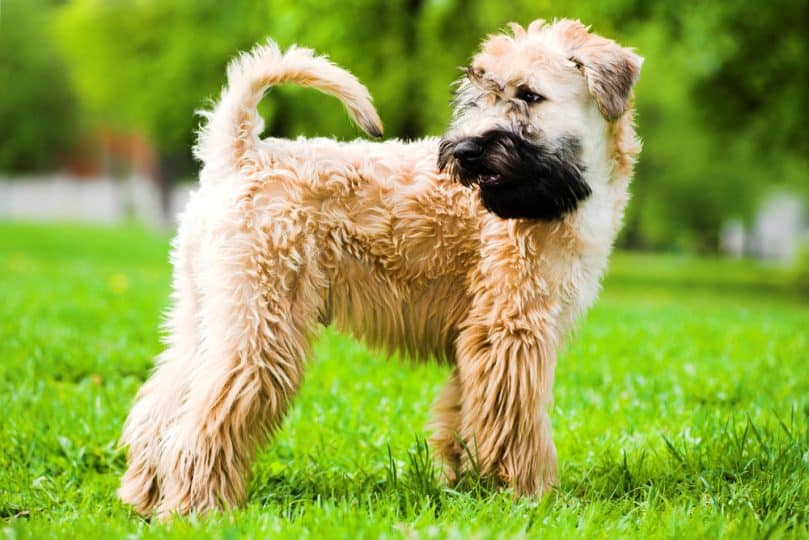
Irish Soft-Coated Wheaten Terrier
Though both dogs are friendly, Wheaten Terriers have a high prey drive that may make it difficult for them to get along with other pets.
Why we love Poodles
Poodles are a misunderstood breed; behind their fussy-looking coats are playful, intelligent dogs who love spending time with their family. These hardworking pooches love having a job to do and are some of the most accomplished hunters today.
However, the coats on all three sizes of Poodle need plenty of maintenance, from daily brushing to professional grooming. Miniature and Toy Poodles tend to be impatient with younger children, too, so these dogs are not suitable for all families.
What are your experiences with Poodles? Don’t forget to tell us in the comments!

Leave a Reply